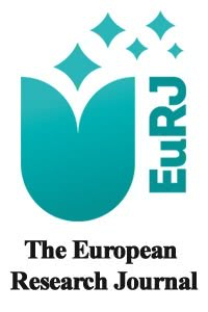Evaluation of radiologic predisposing factors for greater trochanteric pain syndrome
Evaluation of radiologic predisposing factors for greater trochanteric pain syndrome
___
- 1. Fearon A, Stephens S, Cook J, Smith P, Neeman T, Cormick W, et al. The relationship of femoral neck shaft angle and adiposity to greater trochanteric pain syndrome in women. a case control morphology and anthropometric study. Br J Sports Med 2012;46:888-92.
- 2. Reid D. The management of greater trochanteric pain syndrome: a systematic literature review. J Orthop 2016;13:15-28.
- 3. Lievense A, Bierma-Zeinstra S, Schouten B, Bohnen A, Verhaar J, Koes B. Prognosis of trochanteric pain in primary care. Br J Gen Pract 2005;55:199-204.
- 4. Long SS, Surrey DE, Nazarian LN. Sonography of greater trochanteric pain syndrome and the rarity of primary bursitis. AJR Am J Roentgenol 2013;201:1083-6.
- 5. Ege Rasmussen KJ, Fanø N. Trochanteric bursitis. Treatment by corticosteroid injection. Scand J Rheumatol 1985;14:417-20.
- 6. Williams BS, Cohen SP. Greater trochanteric pain syndrome: a review of anatomy, diagnosis and treatment. Anesth Analg 2009;108:1662-70.
- 7. Tortolani PJ, Carbone JJ, Quartararo LG. Greater trochanteric pain syndrome in patients referred to orthopedic spine specialists. Spine J 2002;2:251-4.
- 8. Dunn T, Heller CA, McCarthy SW, Dos Remedios C (2003) Anatomical study of the “trochanteric bursa”. Clin Anat 2003;16:233-40.
- 9. Grimaldi A, Fearon A. Gluteal tendinopathy: integrating pathomechanics and clinical features in its management. J Orthop Sports Phys Ther 2015;45:910-22.
- 10. Govaert LH, van der Vis HM, Marti RK, Albers GH. Trochanteric reduction osteotomy as a treatment for refractory trochanteric bursitis. J Bone Joint Surg Br 2003;85:199-203.
- 11. Pelsser V, Cardinal E, Hobden R, Aubin B, Lafortune M. Extraarticular snapping hip: sonographic findings. AJR Am J Roentgenol 2001;176:67-73.
- 12. Santos LEN, Navarro TP, Machado CJ, de Amorim Cabrita HAB, Pires RE, Figuriredo LB, et al. Relationship of the Pelvic-Trochanteric Index with greater trochanteric pain syndrome. Clinics (Sao Paulo). 2021;76:e3312. Published 2021 Nov 26. doi:10.6061/clinics/2021/e3312
- 13. Canetti R, de Saint Vincent B, Vieira TD, Fière V, Thaunat M. Spinopelvic parameters in greater trochanteric pain syndrome: a retrospective case-control study. Skeletal Radiol 2020;49:773-8.
- ISSN: 2149-3189
- Yayın Aralığı: 6
- Başlangıç: 2015
- Yayıncı: Prusa Medikal Yayıncılık Limited Şirketi
Mustafa KAPLANGORAY, Kenan TOPRAK, Cihan AYDIN, Ramazan ASLAN
Evaluation of infections in patients with kidney and liver transplantation
Sibel DOĞAN KAYA, Güliz EVİK, Münire DENİZ, Yeşim UYGUN KIZMAZ
The effect of glycemic control on sleep quality in type 2 diabetes mellitus
Zeynep KOÇ, Banu BÖYÜK, Seydahmet AKIN, Özcan KESKİN, Nazire ALADAĞ
The effect of hypertension on renal functions in patients with acute coronary syndrome
Aysu YILDIZ KARAAHMET, Fatma Şule BİLGİÇ
Pharmacobiology of topical Ankaferd hemostat in neoplastic disorders
Ümit Yavuz MALKAN, İbrahim Celalettin HAZNEDAROĞLU
Cüneyt ARIKAN, Osman Sezer ÇINAROĞLU, Mehmet Göktuğ EFGAN, Efe KANTER, Ejder Saylav BORA
